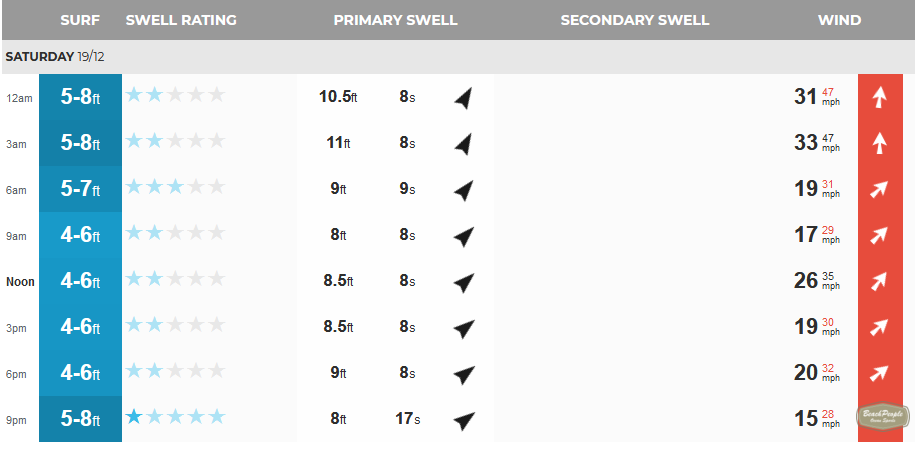Posted on the Club Blog December 19th 2020
If you've looked at the surf forecast and wondered why the stars shown are different colours, then this Saturday Night & Sunday Morning's forecasts for Bournemouth are a really good example of how that works.
In the screenshot below of Saturday's surf...Posted on the Club Blog December 19th 2020
If you've looked at the surf forecast and wondered why the stars shown are different colours, then this Saturday Night & Sunday Morning's forecasts for Bournemouth are a really good example of how that works.
In the screenshot below of Saturday's surf forecast (from MSW here bit.ly/34rxijN) it's showing five stars throughout the day - the number stars reflect the height of the swell.
Some of the stars are shown in dark blue, some are light blue and some have faded to grey - the reflects the effect of the wind - offshore is best:
"Onshore winds produce mushy, choppy and spilling waves. They rarely bring good news. However, onshore breeze can be a good thing when the all you've got in front of you is a flat ocean. That is because they make waves. And it's better to ride two-foot rollers than to wait in terra firma for a dream session.
Offshore winds are the real deal. They have the ability to soften the face of the waves and make it easier for surfers to draw lines and perform tricks on them.
Offshore winds will also delay the breaking of the waves. In extreme cases, they will only break when they reach the shore because the wind coming from land is "holding" up the liquid walls.
Surfers usually use the terms "glassy," "oily," "clean," and "silky smooth" to characterize the quality of the waves and the surf under light offshore breezes. So, we often say that offshore winds clean up the ocean, and bring quality waves."
- SurferToday.com (bit.ly/3asJJQa)
Back to the screenshots - we can see that on Saturday the wind swings from dead onshore 20-30mph to cross-on 15mph, and as a result the stars get coloured in a darker blue. The wave separation (the second figure in the Primary Swell column) increases dramatically from a horrible eight seconds where you are getting smashed continually trying to get out past the break, to seventeen seconds when you can take a more relaxed paddle/wade through the swash or sprint out in just a few waves rather than being hit by dozens (or give up entirely!)
Those conditions prevail through Sunday morning (second image) with noon on Sunday showing probably the best conditions - lower wind with few gusts, cross-on, 14 sec separation and a 6.5 ft primary swell which is plenty for most people. And it's sunny and 10 degrees C to boot!
..
Show more


